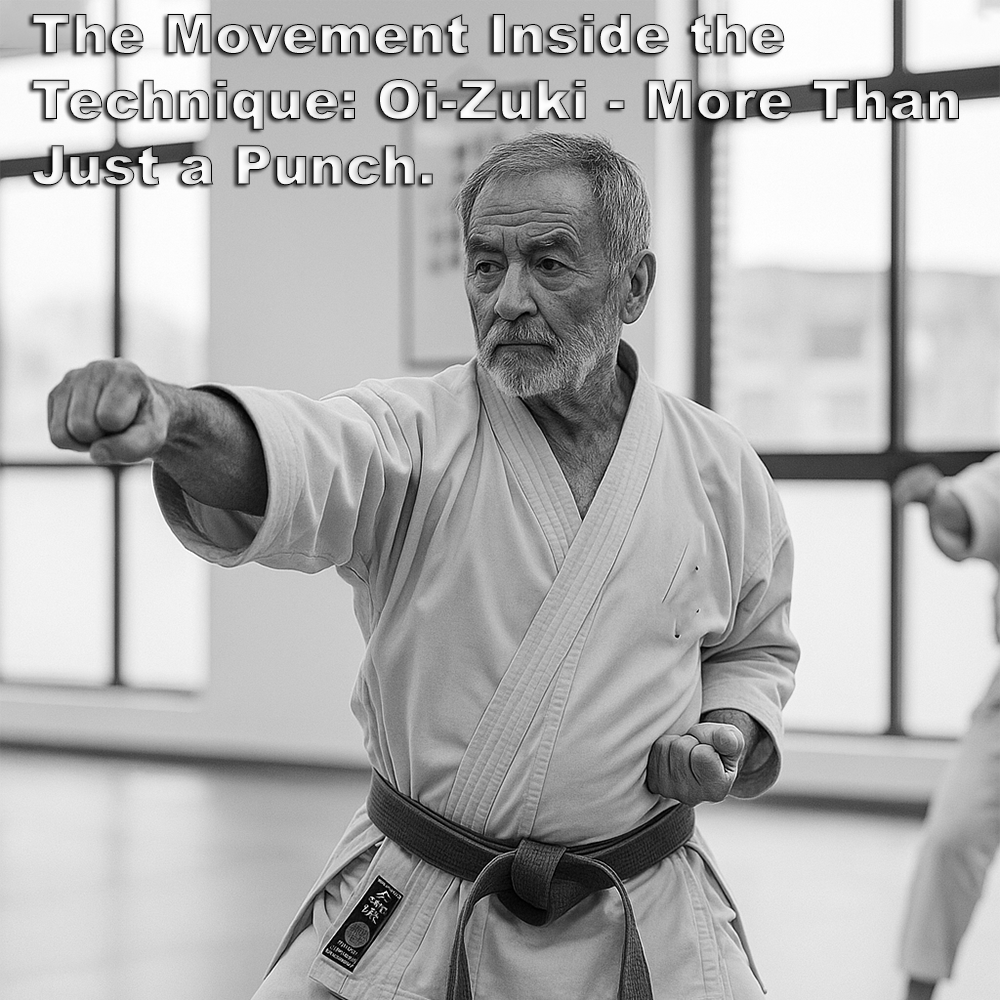
(Approx 2 minute 20 second read)
Someone recently said they enjoy kata, but can’t see how movements like oi-zuki connect to kumite – it all feels too different.
.
My response was this: if kata and kumite feel completely disconnected, that’s often down to how they’re being taught. Kata should reflect principles that hold up under pressure. And when it comes to oi-zuki in particular, perhaps the problem lies in the label itself.
.
The Japanese term, oi-zuki (追い突き), literally translates to ‘pursuing thrust’ or ‘chasing punch’ – the very name hinting at a dynamic, responsive action rather than a static, predefined ‘punch’ often taught as a stepping technique.
.
Furthermore, if you remove the terminology, it’s perhaps no longer just a punch.
.
This way of looking at technique is key to understanding older karate – the kind that developed in the Ryukyu’s, long before it was formalized and standardized in Japan.
.
Back then, karate wasn’t filled with the terminology we use today. Techniques weren’t boxed in by names. Instruction was personal and direct. It was all about function, not form. You were shown what worked, not what it was called.
.
When terminology is applied too rigidly, the ‘technique’ gets trapped inside the label. Oi-zuki becomes a punch – and only a punch. That limits how we understand it, and worse, how we apply it under pressure. But if we remove the name, we remove the restriction. Suddenly, the movement becomes the focus.
.
And that opens up a myriad of possibilities.
.
A closed fist doesn’t always mean a punch. It might be a grab, a pull, or a control. Always consider the closed hand to be holding something – whether it’s an arm, clothing, or the enemy’s intent. And what is the opposite hand doing? If you train with this in mind, you start to think with purpose.
.
One often-missed aspect of oi-zuki is that it isn’t necessarily a stepping punch – it can be a chasing punch. In the right context, you’re not initiating an attack, but responding. You’re being pulled forward and you drive in to finish – maybe with a strike, maybe with a push, maybe with a grab or a crash.
.
Again, it comes down to movement over technique. If you’re only looking for a punch, that’s all you’ll find. But if you’re looking for intent, interaction, and flow, suddenly the meaning expands.
.
Likewise, open-hand techniques – so often dismissed – are incredibly important in kata. They strike, control, unbalance, and seize. Often, they do all of that in one motion. The influence of Chinese arts like White Crane, with their emphasis on open-hand methods, is clear in many older kata. These movements weren’t about looking right – they were about working when needed.
.
In my view, everything is movement. That’s the core of it. If we fixate on names and textbook form, we start to lose the deeper lessons. Every action in kata should be considered to have multiple uses and be rooted in functional motion – because the deeper purpose often hides just beneath the surface.
.
So yes, oi-zuki might be a punch. But it might not. And when it really counts, we want movement that adapts, not technique that restricts.
.
.
Written by Adam Carter
